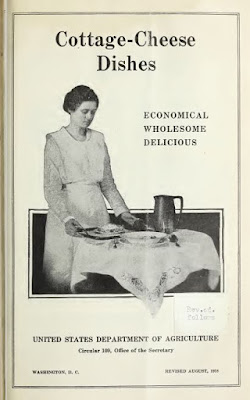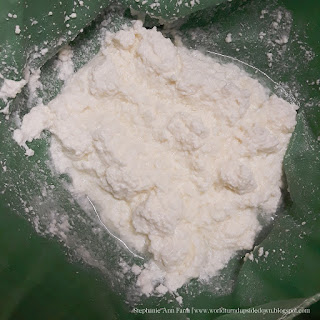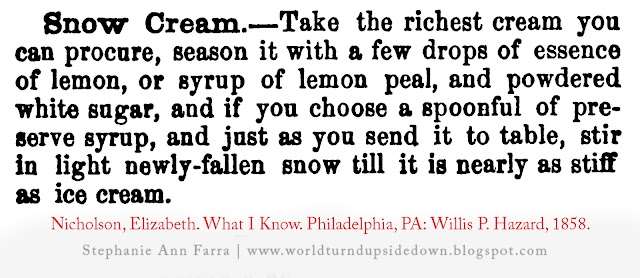"Don't Talk! Go to Sleep!
Eyes shet an' don't you peep!
Keep still, or he jes moans:
'Raw Head an' Bloody Bones!'"
-"Negro Folk Rhymes" (1922) compiled by Thomas W. Talley
It might seem strange to us today that winter, a season of festive cheer and celebrations, was once a time for scary stories. But for those who lived in a world where days grew shorter and the fields lay barren, gathering around the fire and telling tales of ghosts and ghouls felt natural. Among these chilling stories, few were as enduring or as terrifying as those of Raw Head and Bloody Bones.
Raw Head and Bloody Bones is a centuries-old bogeyman whose origin has been lost to time. He goes by many names—“Rawhead,” “Tommy Rawhead,” and “Raw-Head-and-Bloody-Bones.” In some stories, "Rawhead" and "Bloody Bones" are treated as two separate ghouls. Despite the variations, the legend is consistent in its ability to frighten children and adults alike. Typically, Rawhead is depicted as a skull with teeth, while Bloody Bones is portrayed as a skeleton without a head. Together, they are said to abduct naughty children, cook them in a stew pot, and devour them.
Many English towns have their own versions of the Bloody Bones tale, often placing the ghoul in dangerous locations such as marshes or caves to deter children from venturing into unsafe areas. “As the nurse’s opiate to quiet a troublesome brat. See! There is Raw Head and Bloody Bones coming to fetch you. Raa! hoes aen bloote-beens” (Bellenden, 36).
 |
| Christmas Entertainments 1740 |
The first recorded use of the term “Bloodybone” appears in a sermon from 1548, according to the Oxford English Dictionary. The legend was especially popular in England, Ireland, the Appalacian Region and the American South from the 18th to the 20th centuries. Even Thomas Jefferson referenced Raw Head and Bloody Bones in his writings, using the figure to symbolize fearmongering in political discourse.
The legend’s influence persisted into the 20th century, as seen in interviews conducted during the 1980s with women born around 1900 in Carrboro, North Carolina. One woman recounted:
I remember one nightmare I had: Old Raw Head and Bloody Bones came out and threw my brother in the fire, and my brother got out and threw Raw Head and Bloody Bones in the fire. But he ran under my bed, and oh, for weeks I was afraid to pass that bed. I guess I was five years old then. And I know a nephew of mine came along. They told him the story of Raw Head and Bloody Bones, and one day he went down to the garden, and during the night the dogs had dragged up an old cow’s head. That little fellow saw that and he screamed bloody murder. It was a raw head and bloody bones (Quinney 1980, 100).
The legend also lived on in the oral histories of formerly enslaved people in the United States. Rachel Adams, an enslaved woman born in Georgia, shared:
Us chillun was allus skeered to play in de thicket nigh de house ‘cause Raw Head and Bloody Bones lived der. I used to think I seed ha’nts at night, but it allus turned out to be somebody dat was tryin’ to skeer me (Work Projects Administration 1941).
Georgia Baker spoke of the enduring fear instilled by such tales:
Oh Lord! Us never played no games in slavery times, ‘cept jus’ to run around in a ring and pat our hands. I never sung no songs ‘cause I warn’t no singer, and don’t talk ‘bout no Raw Head and Bloody Bones or nothin’ lak dat. Dey used to skeer us chillun so bad ‘bout dem sort of things dat us used to lay in bed at night a-shakin’ lak us was havin’ chills. I’ve seed plenty of ha’nts right here in Athens. Not long atter I had left Crawfordville and moved to Athens, I had been in bed jus’ a little while one night, and was jus’ dozin’ off to sleep when I woke up and sot right spang up in bed. I seed a white man, dressed in white, standin’ before me. I sho didn’t say nothin’ to him for I was too skeered. De very last time I went to a dance, somepin got atter me and skeered me so my hair riz up ‘til I couldn’t git my hat on my haid, and dat cyored me of gwine to dances. I ain’t never been to no more sich doin’s (Work Projects Administration 1941).
Mary Colbert took a more pragmatic view:
Honey, there is no use to ask me about Raw Head and Bloody Bones. When folks started talking about that, I always left the room. It is a shame how folks do frighten children trying to make them get quiet and go to sleep. I don’t believe in ha’nts and ghosts. Since I have been grown, I have been around so many dead folks I have learned that the dead can’t harm you; it’s the living that make the trouble.
From English nurseries to the fields of Georgia, the legend of Raw Head and Bloody Bones transcended generations serving as both a tool of caution and a source of terror. While the stories may no longer dominate our winters, they remain a fascinating glimpse into the imaginations of those who came before us. If you find yourself around the fire this year, you might think to tell your company a chilling story of Raw Head and Bloody Bones.
References
Notes and Queries a Medium of Intercommunication for Literary Men and General Readers . 1914. Vol. IX. London: John C. Francis & J. Edward Francis.
Bellenden, John. 1834. An Essay on the Archaeology of Our Popular Phrases, and Nursery Rhymes. Longman, Rees, Orme, Brown, Green & Co.
Quinney, Valerie. 1980. “Mill Village Memories.” Southern Exposure VIII (3): 98–109.
Talley, Thomas W. 1922. Negro Folk Rhymes. New York Macmillan 1922.
Work Projects Administration. 1941. Slave Narratives: A Folk History of Slavery in the United States from Interviews with Former Slaves, Volume IV, Georgia Narratives, Part 1. Vol. 1. Washington D.C.: Library of Congress. https://www.gutenberg.org/cache/epub/13602/pg13602-images.html.
















































